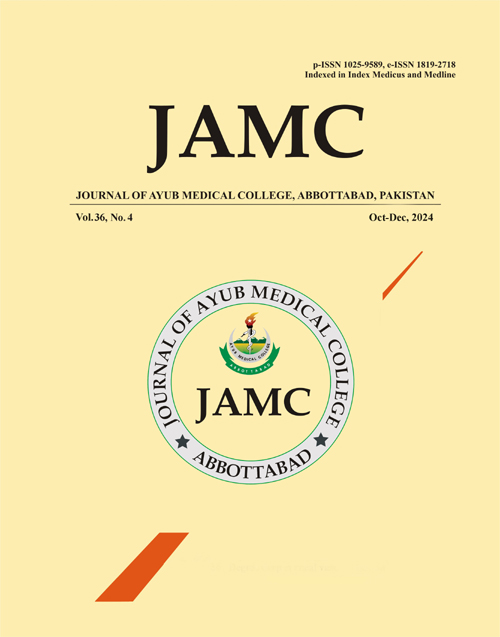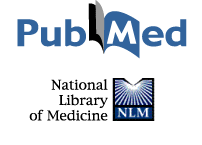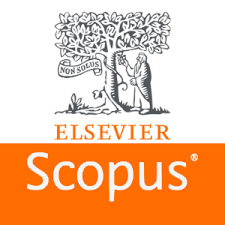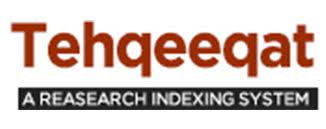HEPATOPROTECTIVE EFFECT OF MINT AGAINST HEPATOTOXICITY, INDUCED BY CHLOROQUINE, IN MALE ALBINO MICE: RCT
DOI:
https://doi.org/10.55519/JAMC-04-13443Keywords:
Chloroquine; Mint; Hepatotoxicity; Oxidative stress; Hepatoprotective; AntioxidantAbstract
Background: Many drugs have been associated with hepatotoxicity worldwide. This hepatotoxicity occurs due to oxidative stress generated by those drugs. Hence, different plants, which have antioxidant effects, can be used to prevent hepatotoxicity. The objective was to find out the hepatoprotective effect of mint, against chloroquine induced hepatotoxicity, due to its antioxidant potential. Methods: For that randomized controlled trial study, ninety male albino mice were obtained and were divided randomly into three groups, with each group containing 30 mice. Group A was the control group. So, no intervention was done on mice of Group A. Group B and C were the experimental groups. Group B mice were given chloroquine only. The mice of Group C were given both chloroquine and mint extract. The single oral dose of chloroquine, 970 mg/ kg of body weight, was given to the mice of group B, on the 9th day of the experiment. The ethanolic extract of mint, at the dose of 1 gm/kg, was given consecutively from day 1 to day 8 of the experiment to Group C mice. Then chloroquine (970 mg/kg of the body weight) was given on nineth day to Group C. The ethanolic extract was then continuously given from day 10 to day 16 of the experiment, followed by chloroquine administration, to those mice. The blood samples were collected on 17th day by terminal intracardiac sampling technique. Data analysis was done by SPSS version 20. Results: Group B mice showed highly significant rise in serum ALP and significant decrease in serum albumin, as compared to those of group A. Serum AST and ALT, however, raised insignificantly. Hence, mild hepatotoxicity was induced in group B mice. On the other hand, malondialdehyde, was found to be highly significantly raised in group B mice. While, serum glutathione peroxidase was found to be declined highly significantly in group B mice, which showed oxidative stress induction. The mice of group C showed highly significant decrease in serum ALP and significant decline in serum AST. They showed significant raise in serum albumin. Serum malondialdehyde, however, declined highly significantly and serum glutathione peroxidase raised highly significantly in group C. These results in group C occur due to antioxidant action of mint. Conclusion: Mint revealed hepatoprotective effect due to its antioxidant potential, against chloroquine induced mild hepatotoxicity.
References
1. Hosack T, Damry D, Biswas S. Drug-induced liver injury: a comprehensive review. Therap Adv Gastroenterol 2023;16:17562848231163410.
2. Devarbhavi H, Asrani SK, Arab JP, Nartey YA, Pose E, Kamath PS. Global burden of liver disease: 2023 update. J Hepatol 2023;79(2):516–37.
3. Garcia-Cortes M, Robles-Diaz M, Stephens C, Ortega-Alonso A, Lucena MI, Andrade RJ. Drug induced liver injury: an update. Arch Toxicol 2020;94(10):3381–407.
4. Villanueva-Paz M, Morán L, López-Alcántara N, Freixo C, Andrade RJ, Lucena MI, et al. Oxidative stress in drug-induced liver injury (DILI): from mechanisms to biomarkers for use in clinical practice. Antioxidants (Basel) 2021;10(3):390.
5. Mas-Bargues C, Escriva C, Dromant M, Borras C, Vina J. Lipid peroxidation as measured by chromatographic determination of malondialdehyde. Human plasma reference values in health and disease. Arch Biochem Biophys 2021;709:108941.
6. Zhang Y, Luan Q, Jiang J, Li Y. Prediction and utilization of malondialdehyde in exotic pine under drought stress using near-infrared spectroscopy. Front Plant Sci 2021;12:735275.
7. Kalas MA, Chavez L, Leon M, Taweesedt PT, Surani S. Abnormal liver enzymes: A review for clinicians. World J Hepatol 2021;13(11):1688.
8. Lala V, Zubair M, Minter D. Liver function tests. StatPearls. 2023.
9. Buabeid MA, Arafa ES, Rani T, Ahmad FU, Ahmed H, Hassan W, et al. Effects of Solanum lycopersicum L.(tomato) against isoniazid and rifampicin induced hepatotoxicity in wistar albino rats. Braz J Biol 2022;84:e254552.
10. Ugo Nwanjo H. Aqueous extract of Tridax procumbens leaves: Effect on lipid peroxidative stress and antioxidant status in chloroquine-induced hepatotoxicity in rats. J Herbs Spices Med Plants 2008;14(3-4):154–65.
11. Bratovcic AJ. Antioxidant enzymes and their role in preventing cell damage. Acta Sci Nutr Health 2020;4:1–7.
12. Rahal A, Kumar A, Singh V, Yadav B, Tiwari R, Chakraborty S, et al. Oxidative stress, prooxidants, and antioxidants: the interplay. Biomed Res Int 2014;2014(1):761264.
13. Forman HJ, Zhang H. Targeting oxidative stress in disease: promise and limitations of antioxidant therapy. Nat Rev Drug Discov 2021;20(9):689–709.
14. Michalak M. Plant-derived antioxidants: Significance in skin health and the ageing process. Int J Mol Sci 2022;23(2):585.
15. Thakur S, Walia B, Chaudhary G. Mentha arvensis (Pudina): A review based upon its medicinal properties. Res J Pharmacogn Phytochem 2021;13(3):143–8.
16. Hanafy DM, Burrows GE, Prenzler PD, Hill RA. Potential role of phenolic extracts of mentha in managing oxidative stress and Alzheimer’s disease. Antioxidants (Basel) 2020;9(7):631.
17. Yahfoufi N, Alsadi N, Jambi M, Matar C. The immunomodulatory and anti-inflammatory role of polyphenols. Nutrients 2018;10(11):1618.
18. Bariya R, Adiyecha R, Pandya H. Analysis of Antioxidant Activity from Mentha arvensis Extracts by DPPH Method. Int J Curr Sci Res Rev 2024;7(5):3136–8.
19. El Hassani FZ. Characterization, activities, and ethnobotanical uses of Mentha species in Morocco. Heliyon 2020;6(11):e05480.
20. Rashid W, Asim S, Rashid S, Rafique S, Aziz RS, Iftikhar S, et al. Antioxidant and anti-mutagenic potential of mint (Mentha arvensis) and its chemical characterization by HPLC. Pak J Med Health Sci 2023;17(4):514–8.
21. Spada A, Emami J, Tuszynski JA, Lavasanifar A. The uniqueness of albumin as a carrier in nanodrug delivery. Mol Pharm 2021;18(5):1862–94.
Downloads
Published
How to Cite
Issue
Section
License
Copyright (c) 2024 Sumbal Khalid, Ayesha Fazal, Shumaela Kanwal

This work is licensed under a Creative Commons Attribution-NoDerivatives 4.0 International License.
Journal of Ayub Medical College, Abbottabad is an OPEN ACCESS JOURNAL which means that all content is FREELY available without charge to all users whether registered with the journal or not. The work published by J Ayub Med Coll Abbottabad is licensed and distributed under the creative commons License CC BY ND Attribution-NoDerivs. Material printed in this journal is OPEN to access, and are FREE for use in academic and research work with proper citation. J Ayub Med Coll Abbottabad accepts only original material for publication with the understanding that except for abstracts, no part of the data has been published or will be submitted for publication elsewhere before appearing in J Ayub Med Coll Abbottabad. The Editorial Board of J Ayub Med Coll Abbottabad makes every effort to ensure the accuracy and authenticity of material printed in J Ayub Med Coll Abbottabad. However, conclusions and statements expressed are views of the authors and do not reflect the opinion/policy of J Ayub Med Coll Abbottabad or the Editorial Board.
USERS are allowed to read, download, copy, distribute, print, search, or link to the full texts of the articles, or use them for any other lawful purpose, without asking prior permission from the publisher or the author. This is in accordance with the BOAI definition of open access.
AUTHORS retain the rights of free downloading/unlimited e-print of full text and sharing/disseminating the article without any restriction, by any means including twitter, scholarly collaboration networks such as ResearchGate, Academia.eu, and social media sites such as Twitter, LinkedIn, Google Scholar and any other professional or academic networking site.










